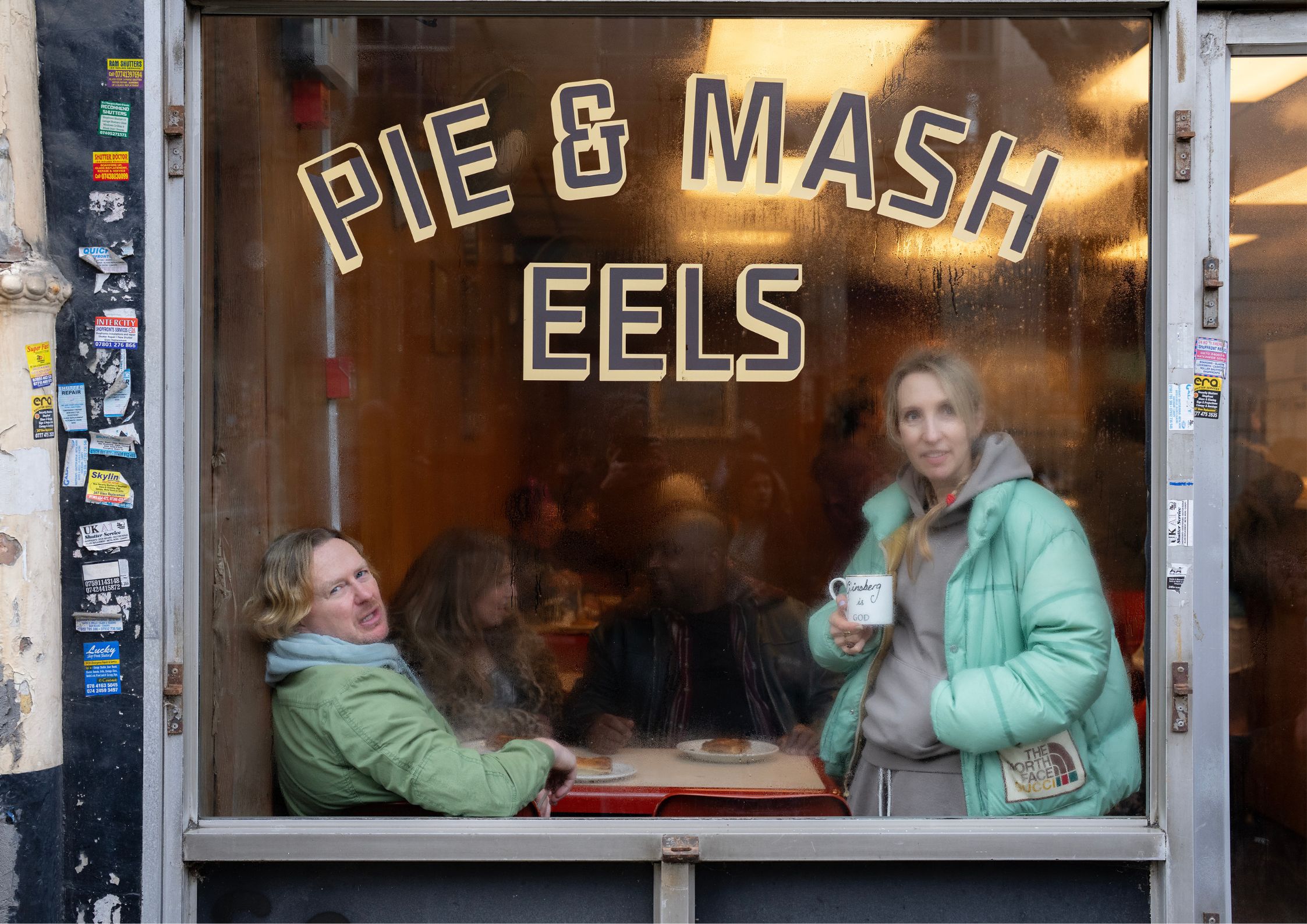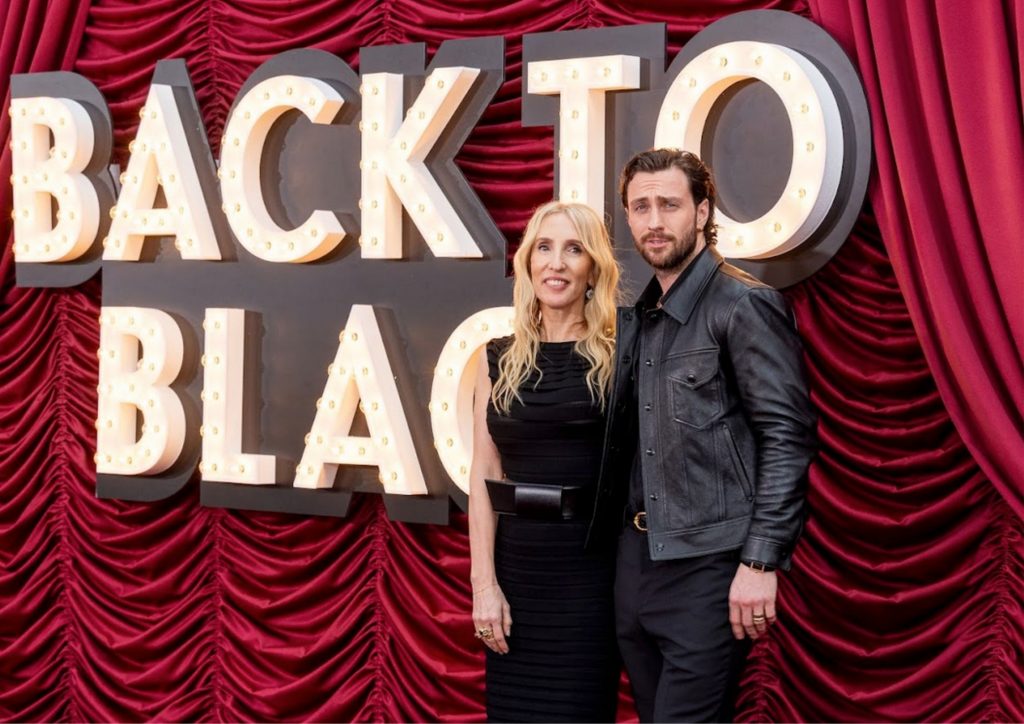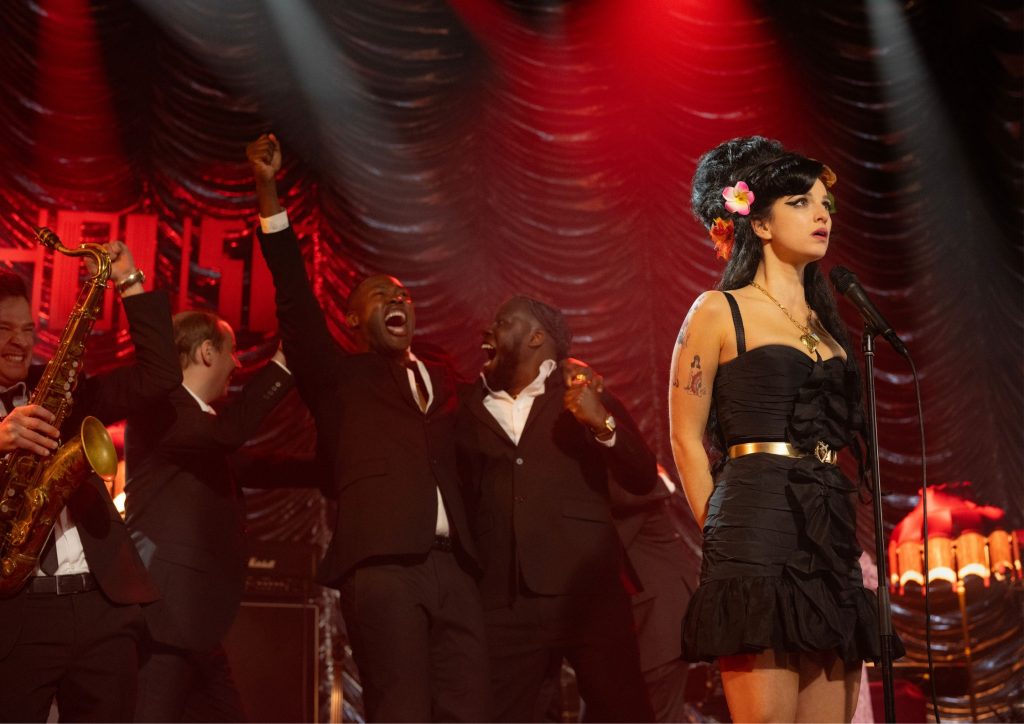Sam Taylor-Johnson: ‘It’s not our place to stand in judgement, this is telling Amy’s life story through her voice’
Director explains her work on new biopic of singer
Monday, 15th April — By Dan Carrier

Dan Carrier talked to Sam Taylor-Johnson about the life and loves of Amy Winehouse
FROM her jazz-infused voice to her towering beehive, her snarl of a smile and her quick-talking quips, Amy Winehouse was globally recognised for a reason.
And it meant when Sam Taylor-Johnson was quietly sounded out about potentially recreating the singer’s life and times on screen, it didn’t take her long to sign up.
“I said yes before I’d processed it. It was an instinctive response,” she told the New Journal.
Sam had herself seen Amy perform an electric gig at Ronnie Scott’s in Soho and said: “I could feel it, I could see it. I could come back to London – there were so many layers, I didn’t have to think.”
That her long-term collaborator, the screen writer Matt Greenhalgh, was interested too sealed the vision of how she wanted Back To Black to look and feel.
“He is a genius and was the right person to do this,” said the film director, who is guest editing this week’s New Journal.
“A lot of it felt like serendipity and the parting of the seas. There was a very clear path. Making a film can be like pushing a rock up a hill covered in treacle. This was like keeping up with a high-speed train.”
But is there much left to know about Amy’s life? Born into a boisterous north London Jewish family, people remember her father Mitch, a singing cabbie with a love of jazz and the Great American Songbook.
Amy showed promise as a singer and a fiery attitude towards education; she was too bright for her school year and more interested in to spending her time singing and dancing.
She sang with the National Youth Jazz Orchestra, was signed up to the Island record label and brought out her first album, Frank, in the early 2000s. That’s the outline, but it does not explain the drama and and brilliance in her award-winning work.
“I didn’t want to make a traditional biopic,” added Sam.
“I didn’t feel that was her. Would Amy like what I was doing? Would she approve? Her story had to be from her perspective. Using Back to Black and using her lyrics felt like the right path, and the only way to make this film. You could not go wrong using her voice and her lyrics as a go to.”

Back To Black director Sam Taylor-Johnson and her husband Aaron
The movie takes us to a tableside view of a Friday night meal at the Winehouses, of songs sung, jokes cracked and cheeks pinched. There is an eye for the detail of life in a Jewish family on the Sabbath evening and what it meant for Amy.
“She was proud of her heritage,” said Sam. “I wanted to start with that warm embrace of the family and illustrate what family meant to her.”
It’s not just people that loom large in the Winehouse legend – places do too, and the film was shot in the real locations that Amy could be found.
“We used The Good Mixer and the Dublin Castle,” the director said.
“I said to the publicans ‘thank god they haven’t been renovated’. It meant they had an authentic texture. We filmed in real London places, places she had been to.”
The changing backdrop of Camden Town had to be tackled, however.
“Vape shops didn’t exist then – that was the main sort of challenge,” said Sam.
“But it was vitally important to shoot it there or I’d be telling a lie. The texture, the spirit of Camden, there is nowhere else like it and absorbing that on screen was imperative.”
A different approach, of course, had to be taken to Amy’s 2007 performance at Glastonbury, a seminal moment in her career revisited by the movie. With the Pyramid Stage at Worthy Farm still being built for this year’s festivities, it wasn’t possible to shoot on location.
“We couldn’t do it for real, so they recreated Glastonbury in one room in Ealing,” Sam said. “It was just extraordinary.” The writer was in place, the story arc assembled.
Now for the sink-or-swim moment: casting someone who could get close to Winehouse, a problem which she and casting director Nina Gold thought would be a long search.
“I wrote a wish-list of what I wanted,” Sam said, but explained: “Marisa [Abela] was the first person I met and first person I auditioned. She was the only one who understood it was to interpret and not impersonate.
” The lead actor worked hard trying to get the vocal essence of the singer right.
“We had a eureka moment,” revealed Sam. “We went to the Abbey Road studios, she sat down and picked up a guitar and started singing. I filmed it on my phone and thought – wow, she can do this. How I filmed it on my phone was how I wanted to show it on film. I nailed that in one take.”
Reclaiming Amy from the tragedy surrounding her death was a key motivator for Sam.
“I feel I want people to come back to her music. When you come out of the cinema, go home and play her music,” she said.
“You have seen the story now and heard it in a different way. It is a way of celebrating her and giving her her agency back. She was robbed of that. Amy’s was a once-in -a-generation voice and I hope we have shown that.”

Marisa Abela as the Amy Winehouse at Back To Black
The singer’s death aged 27 after years of sobriety cannot be anything but a tragedy, and balancing this sadness with a celebration of her life was a task Sam said she had thought long and hard about.
“I look at a film and think it’s two to three years of my life. Am I happy to go on this journey? I realised I wanted to be in her company for that length of time,” she said.
“I felt like I was in her world. I wanted to understand her, the pain as well as the success.”
The pain of addiction and the heartbreak of failed relationships became clear through the film-making process, said Sam, adding: “Learning about her and being around her, there were times when that was uncomfortable.
The dicier moments were quite haunting. They were on my mind.”
The film offers no soapbox preaching about drink and drug use.
“Addiction is the villain. It was not my place to be a judge and it is very hard if you do not understand that world,” she said.
“People had their opinions and this was not the place to continue a consideration of flaws and mistakes, but a place to celebrate her. This film was to celebrate her beautiful talent.
Eddie Marsan plays Mitch while Jack O’Connell plays her husband Blake Fielder-Civil.
In the endless online and tabloid discussions, both have been criticised for the way they handled their relationships with Amy, but Sam did not want to be drawn into a blame game.
“With those two, it is shot through her perspective,”, she said. “I wasn’t going to villainise those people, two humans with real characters, as well as being a loving father who did not know how to handle it.
She loved Mitch and she loved Blake and her music was written about him. If I had made them one-dimensional it would have made her stupid, and that is not true. I just wanted to serve her well.
And I don’t think we should sit in judgment until you are in that position yourself.”
She added: “I remember looking at pictures, her character and style, and you can see what Blake fell for.
“This is about a period in her life when they were the most stylish icons on the street – we now can see that through a different lens.”
